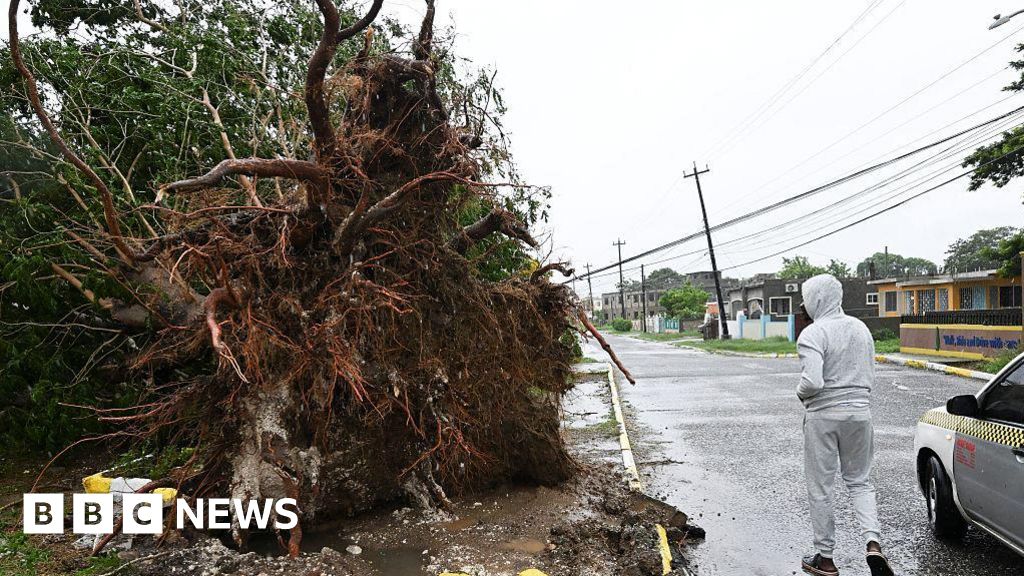In the battle against climate change, it's fair to say scientists have proposed some fairly farfetched ideas.
One sci-fi worthy but controversial concept proposed to halt global warming involves dimming the sun.
Also known as 'stratospheric aerosol injection' (SAI), it involves the release of tiny particles into the stratosphere by planes to reflect sunlight away from Earth.
Some hope SAI will cool the planet, stop the melting of sea ice and save humans from a climate catastrophe.
But according to a new study, it may actually have the opposite effect.
Scientists in New York warn that such a technique could wreak havoc on the weather – and actually make climate change worse.
Dimming the sun could lead to extreme weather events such as floods and freezing cold snaps, as well as acid rain and human inhalation of toxic aerosols.
What's more, proponents of the technique dramatically underestimate just how difficult and complicated it will be, they say.
SAI is just one form of 'geoengineering' – large-scale interference and manipulation of Earth's natural processes in an attempt to halt global warming.
Typically, SAI involves the release of tiny sulfur dioxide (SO2) particles into the stratosphere by an army of planes, although other compounds have been proposed too.
Once injected into the stratosphere, sulfur dioxide forms sunlight-reflecting sulfate aerosols, said to have a cooling effect similar to that of a major volcanic eruption.
The scientists say SAI was once considered a fringe idea, but now it is 'a matter of serious scientific consideration'.
However, proponents dramatically underestimate just how difficult and complicated it will be, according to the Columbia Climate School researchers.
The experts collected the scattered scientific literature on how SAI’s impacts would be shaped by the various aspects of its deployment.
If the aerosols were released in the polar regions, they would would likely disrupt tropical monsoon systems which could have an effect on sea levels, they found.
Meanwhile, releases concentrated in equatorial regions could affect the jet stream and disrupt atmospheric circulation patterns that conduct heat towards Earth's poles.
Stratospheric aerosol injection: The technique involves the release of tiny sulfur dioxide (SO2) particles into the stratosphere by planes to reflect sunlight
What is geoengineering?
Geoengineering is the large-scale manipulation of environmental processes that affect Earth's climate, in an attempt to halt global warming.
Globally, projects include injecting chemical aerosols into the atmosphere to reflect sunlight and absorbing CO2 dissolved in seawater.
But critics have concerns that expensive geoengineering endeavors will backfire, causing destructive weather patterns and making climate change worse.
This could trigger a dramatic climate change episode, such as a deep freeze either side of the Atlantic and more rainfall and wild weather.
What's more, the use of sulfates for SAI could pose similar risks, or additional environmental concerns, including acid rain and soil pollution.
There's also the issue that in high levels, sulfur dioxide can cause nausea, vomiting, stomach pain and corrosive damage to the airways and lungs.
Other alternative materials proposed instead of sulfates due to their reflective qualities such as diamond are either not particularly abundant or raise technical challenges involved with dispersing them.
Some scientists who point to SAI as a solution often present simulations suggesting it would work effectively, but the reality may not be quite as effective, the team allege.
'Even when simulations of SAI in climate models are sophisticated, they're necessarily going to be idealised,' said study author Faye McNeill, an atmospheric chemist at Columbia Climate School.
'Researchers model the perfect particles that are the perfect size, and in the simulation, they put exactly how much of them they want, where they want them,' she said.
'But when you start to consider where we actually are, compared to that idealized situation, it reveals a lot of the uncertainty in those predictions.'
A significant variable to consider is latitude. For example, SAI concentrated in polar regions would likely disrupt tropical monsoon systems
Overall, there are several factors that affect how aerosols interact with Earth systems, such as the altitude, latitude and longitude at which they are released, the time of year when this takes place, and the sheer number of particles involved.
Even if the variables are perfectly considered and somehow the threats are negated, SAI would need to be done in a centralized, coordinated fashion, but given 'geopolitical realities' this is unlikely, according to the study in Scientific Reports.
More broadly, deploying expensive geoengineering projects may be a big distraction from global efforts towards reducing greenhouse gas emissions.
Globally, other geoengineering projects include sucking carbon dioxide (CO2) out of the air with giant fans.
There's also 'ocean fertilization' (adding nutrients to the upper ocean to stimulate plant growth) and 'afforestation' (planting trees in areas where there was previously no forest).
But there's concerns countries will pursue poorly-regulated geoengineering projects in secret – especially sun-blocking which could have unintended consequences.
WHAT ARE THE SIDE EFFECTS OF GEOENGINEERING STRATEGIES?
Scientists have proposed all sorts of solutions to fight climate change, including a number of controversial geoengineering strategies.
Among the many include:
Afforestation: This technique would irrigate deserts, such as those in Australia and North Africa, to plant millions of trees that could absorb carbon dioxide.
Drawback: This vegetation would also draw in sunlight that the deserts currently reflect back into space, and so contribute to global warming.
Scientists have proposed all sorts of solutions to fight climate change. File photo
Artificial ocean upwelling: Engineers would use long pipes to pump cold, nutrient-rich water upward to cool ocean-surface waters.
Drawback: If this process ever stopped it could cause oceans to rebalance their heat levels and rapidly change the climate.
Ocean alkalinisation: This involves heaping lime into the ocean to chemically increase the absorption of carbon dioxide.
Drawback: Study suggests it will have of little use in reducing global temperatures.
Ocean iron fertilisation: The method involves dumping iron into the oceans to improve the growth of photosynthetic organisms that can absorb carbon dioxide.
Drawback: Study suggests it will have of little use in reducing global temperatures.
Solar radiation management: This would reduce the amount of sunlight Earth receives, by shooting reflective sulphate-based aerosols into the atmosphere.
Drawback: Carbon dioxide would still build up in the atmosphere.
 (1).png)
 2 weeks ago
11
2 weeks ago
11

















